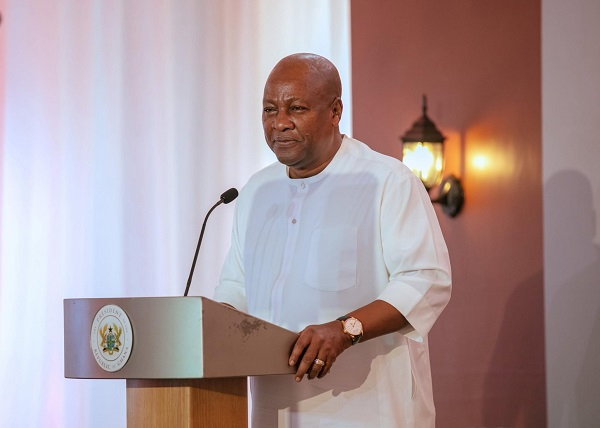What comes after globalization?
By
The world is entering a new era in which rich countries will adopt an unusual dual policy: abandoning neoliberal globalization internationally and resolutely promoting a neoliberal project domestically.
Donald Trump has returned to power and, to put it mildly, he is not exactly a fan of globalization. The American president asserts his patriotism by publicly declaring his rejection of a “globalism” that, in his words, “has left millions and millions of our working people with nothing but poverty and suffering.” To better understand the current era of globalization that he seeks to end and its trajectory, it is useful to compare it with the globalization that occurred between 1870 and the outbreak of the First World War.
Both globalizations represent pivotal periods, decisive years that shaped today’s world. And both witnessed the greatest expansion of global economic output to date.
However, they were also very different in many ways. The first globalization was associated with colonialism and the hegemonic dominance of Great Britain. It led to a huge increase in per capita income in what would later be known as the “developed world.” At the same time, it led to stagnation in the rest of the planet and even declining incomes in China and Africa.
The latest figures from the Maddison Project’s historical statistics database show that the cumulative increase in real (inflation-adjusted) GDP per capita in the UK between 1870 and 1910 was 35%, while GDP per capita doubled in the US over the same period. However, China’s GDP per capita fell by 4%, and India’s GDP rose only slightly, by 16%. This particular type of development created what later became known as the Third World and reinforced the differences in average incomes between Western and non-Western countries.
From the perspective of global inequality, which is largely a reflection of these events, the “” led to an increase in inequality, as already wealthy areas grew more rapidly, while poorer areas stagnated or even regressed.

In addition to the growing gap between nations, inequality also increased in many rich economies, including the United States, as seen in the upward trend in Figure 1, where the richest grew more. The United Kingdom was an exception, with inequality peaking just before the onset of Globalization I, during the 1860s and 1870s.
The British social tables, the main source of information on income distribution in the past, compiled by Robert Dudley Baxter in 1867 (coincidentally the year of publication of The capital, by Karl Marx), mark the year of greatest inequality in the 1860th century. British inequality subsequently declined thanks to a series of progressive laws, ranging from limits on working hours to bans on child labor and expansion of the right to vote. Recent data also show a rise in inequality in Germany after its unification in the late XNUMXs.
François Bourguignon and Christian Morrisson, on whose figures Figure 1 is based, did not have information on changes in inequality in India and China, so both countries are represented by a straight line across the income deciles (implying that they grew at the same rate).
New fiscal data for India, focusing on the top of the distribution, produced by economists Facundo Alvaredo, Augustin Bergeron and Guilhem Cassan, show stable, albeit very high, inequality. Thus, overall, both components of global inequality (between nations and, in most cases, within nations) increased during Globalization I.
How does this differ from the current globalization, “Globalization II,” which is conventionally dated from the fall of the Berlin Wall in 1989 to the Covid crisis in 2020? It should be noted that the exact end point of Globalization II may be controversial. It could be attributed to Trump’s imposition of tariffs on Chinese imports in 2017 or even, symbolically, to his second accession to power in January 2025. But the date we choose does not change the essential features of Globalization II.
During this period, the United States, the United Kingdom and the rest of the rich world experienced growth, but at rates that, compared to Asian countries, were quite modest. Between 1990 and 2020, US real GDP per capita grew at an average annual rate of 1,4% (slower than in the first globalization), and British GDP per capita grew by just 1% per year. Populous and relatively poor countries (poor, at least, at the beginning of Globalization II) grew much faster: Thailand at 3,5% per capita, India at 4,2%, Vietnam at 5,5%, and China at an impressive 8,5%.
The contrast is shown in Figures 1 and 2. In Figure 1, which shows data for the period 1870 to 1910, every part of the income distribution in rich countries grew faster than every part of the income distribution in poor countries. In Figure 2, which shows data from 1988 to 2018, the growth rates of every part of the income distribution in China and India exceed those of every part of the income distribution in the United States and the United Kingdom.
This has completely transformed the global economy and geopolitics: first, by shifting the economic center of gravity to the Pacific and affecting the relative income position of populations in the West and Asia; and second, by transforming China into a strong rival to US hegemony.
It is undeniable that over the past three decades, the overall income position of large segments of the Western middle and working classes has worsened. This has been especially dramatic in Western countries that have not grown; for example, Italy’s lowest income decile fell from the 73rd to the 55th percentile globally between 1988 and 2018. In the United States, the bottom two deciles actually fell in their global position, although the declines were smaller (7 and 4 percentage points, respectively) than those in Italy.
Furthermore, the Western middle classes lost out compared to their own compatriots at the top of their countries’ respective income distributions. The Western middle classes were thus doubly losers: relative to the rapidly rising Asian middle classes and relative to their much wealthier compatriots. Metaphorically, they can be seen as caught between the two.
Unlike during the first globalization, global inequality declined during the second, driven by high growth rates in large Asian countries. However, within nations, inequality generally increased. This was most evident in China, where the Gini coefficient, a common measure of inequality, nearly doubled after liberal reforms. The same was true in India. Figure 2 shows that income growth among wealthy Indians and Chinese outpaced that of the poor in their countries.
But inequality also increased in developed countries, first with the reforms of Margaret Thatcher and Ronald Reagan, whose effects continued even during the governments of Tony Blair and Bill Clinton, finally stabilizing in the second decade of this century.

The second globalization pushed some of the Western middle classes out of these privileged positions and led to a major redistribution of income as they were overtaken by an expanding Asia. This relatively imperceptible decline occurred in parallel with a much more noticeable decline among the Western middle classes relative to their own national elites. This circumstance generated political discontent, reflected in the rise of populist leaders and parties.
Finally, it is worth noting that global income convergence has not extended to Africa, which has continued its trajectory of relative decline. If this does not change – and the likelihood of this changing seems low – Africa’s relative decline in the coming decades will reverse the forces currently pushing global inequality downward and usher in a new era of rising global inequality.
What may have gone unnoticed at the beginning of Globalization II, but which became increasingly evident as it progressed, was the alliance of interests between the wealthiest sectors of the Western world and the poor masses of the Global South. At first glance, this connection seems strange, given that the two groups have almost nothing in common, not in terms of education, origin or income. It was a tacit alliance, which neither side fully realized until it became obvious.
Globalization has empowered the wealthy in developed countries through changes in their domestic economic structure—tax cuts, deregulation, and privatization—but it has also given them the ability to relocate local production to places where wages were much lower. The replacement of domestic labor by cheap foreign labor has further enriched capital holders and entrepreneurs in the Global North. It has also enabled workers in the Global South to secure better-paying jobs and escape chronic underemployment.
The losers in all this were the middle-class workers in developed countries, who were replaced by much cheaper labor from the Global South. It is therefore not surprising that the Global North has deindustrialized, not only as a result of automation and the growing importance of services in domestic production, but also because much industrial activity has moved to locations where it can be carried out more cheaply. It is no wonder that the has become the world's new workshop.
This particular coalition of interests was overlooked in the original thinking about globalization. In fact, it was believed that globalization would be detrimental to the vast working masses of the Global South, who would be exploited even more than before. Many people made this mistake based on the events of Globalization I, which effectively led to the deindustrialization of India and the impoverishment of the populations of China and Africa.
During this period, China was largely ruled by foreign traders, and in Africa, farmers lost control of the land they had collectively cultivated since time immemorial. Landlessness further impoverished them. Thus, Globalization I did indeed have a very negative effect on much of the Global South. But this was not the case with Globalization II, which brought relatively higher wages and greater employment opportunities to much of the Global South.
Of course, it is also true that the length of the working day and the working conditions in the Global South were often very difficult and remained much worse than those of workers in the North. Workers’ complaints about the 996 schedule (9 a.m. to 21 p.m., six days a week) are not unique to China, but are a reality across much of the developing world. But these poor conditions represented an improvement over what had gone before and were accepted as such.
Even when contemporary critics of Globalization II were wrong to claim that the new globalization would mean a deterioration in the economic situation of the great masses of the global South – instead, as we have seen, it would harm the middle classes of the global North – they were right about who would benefit most from these changes: the world's rich.
When we speak of neoliberalism, we must make an important analytical distinction between, on the one hand, national neoliberal policies and, on the other, international neoliberal policies. The first type includes the usual package of tax cuts, deregulation, privatization and a general retrenchment of the state.
The second type consists of reducing tariffs and quantitative restrictions and thus promoting free trade in general, as well as exchange rate flexibility and the free movement of capital, technology, goods and services. Labor has always been treated differently; that is, its movement has never been as free as that of capital, although its global mobility was one of the aspirations of the model.
This analytical distinction is especially important for understanding China and for unraveling what the second Trump administration holds. It makes it immediately clear that China has not followed the precepts of neoliberalism in its domestic policies, while it has largely done so in its international economic relations.
This distinguishes China from many other developed and developing countries that have taken both the domestic and international aspects of globalization very seriously. Starting in the 1980s, the United States initiated the neoliberal shift, which was not limited to domestic policies but included the reduction of tariffs, the creation of the North American Free Trade Agreement (NAFTA), and the increase in domestic and foreign investment. The same is true of the European Union. This also applies to and to former communist countries.
The only major resistance was China. Only this country maintained a significant role for the State, which remained a preponderant actor in the financial sector and in key industries such as steel, electricity, the automobile industry and infrastructure in general. Most importantly, the state remained powerful in policymaking and maintained what Vladimir Lenin called the “commanding heights” of the economy.
These Chinese policies, especially under Xi Jinping, can best be understood as similar to Lenin’s New Economic Policy. Under these regimes, the state allows the capitalist sector to expand into less important sectors, but retains control over key parts of the economy and makes important decisions related to technological development.
The Chinese state has been actively involved in the development of today's cutting-edge technologies, such as green technology, electric cars, space exploration and, more recently, artificial intelligence and avionics.
This involvement has ranged from simple incentives in the form of tax breaks to more direct pressure, in which private companies are told what they must do if they want to maintain good relations with the government. A glaring example of the power gap between the state and the private sector was evident in 2020, when the government canceled what would have been the largest IPO in history, that of , a subsidiary of , which would allow it to expand into the fintech, largely unregulated.
Therefore, when we talk about the success of globalization in reducing poverty and increasing growth in many Asian countries, especially China, we must keep in mind the distinction between domestic and international policies. It can be argued that the success of is precisely due to its ability to combine these two elements in a unique way, which left virtually intact the power of government at the national level, while allowing the advantages of trade to be fully exploited to capitalize on its strengths.
This particular strategy could also work well in other large countries, such as India or Indonesia. However, it has clear limitations in small countries, as these lack economies of scale and, perhaps more importantly, do not have the same bargaining power with foreign capital that has allowed China to benefit from significant technology transfers from more developed countries.
The international wave of globalization that began more than thirty years ago is coming to an end. In recent years, we have seen the raising of tariffs by the United States and the European Union; the creation of trade blocs; severe restrictions on the transfer of technology to China, Russia, Iran, and other “hostile” countries; the use of economic coercion, including import bans and financial sanctions; severe restrictions on immigration; and, finally, industrial policies that implicitly subsidize domestic producers.
If the main actors – namely the United States and the European Union – move away from the orthodox neoliberal trade regime, transnational organizations such as the International Monetary Fund and the World Bank will no longer be able to continue preaching the usual precepts of Washington policy to the rest of the world. We are thus entering a new world of country- and region-specific economic and trade policies, moving away from universalism and internationalism towards “neo-mercantilism.”
Donald Trump fits this mold almost perfectly. He loves mercantilism and sees foreign economic policy as a tool to extract all sorts of concessions, sometimes completely unrelated to economics in the strict sense, such as his threat to impose tariffs on Denmark if it refuses to cede Greenland. Perhaps it’s all just bravado.
However, this demonstrates Donald Trump’s view that economic threats and coercion should be used as political tools. Such policies will further fragment the global economic space. Washington’s goal is to slow China’s rise and reduce the Chinese state’s ability to develop new technologies that can be used not only for economic but also military purposes.
However, on the other hand, the domestic component of the standard neoliberal package will only be strengthened under Donald Trump. This is already evident in his intentions to reduce personal income taxes, deregulate virtually everything, allow greater exploitation of natural resources, and further privatize government functions, which essentially amounts to doubling down on all the domestic precepts of neoliberalism.
Thus, we would be faced with a contradiction that is only apparent: the rise of international mercantilism and the rise of domestic neoliberalism – in other words, the opposite combination of China's policies.
Some economists, citing historical examples, believe that mercantilist policies must necessarily be accompanied by policies of greater state control and regulation at home. But this is not the case with the new US administration. The new combination promoted by Donald Trump – tightly controlled immigration combined with extreme neoliberalism at home and mercantilism abroad – is likely to appeal to many people in France, Italy and Germany.
The world is therefore entering a new era in which rich countries will adopt an unusual dual policy: abandoning neoliberal globalization internationally and resolutely promoting a neoliberal project domestically.
is a professor of economics at the City University of New York. Author of, among other books, Capitalism without rivals (However).
Translation published on the website of Unisinos Humanitas Institute.
to our readers and supporters.
Help us keep this idea going.
CONTRIBUTE









